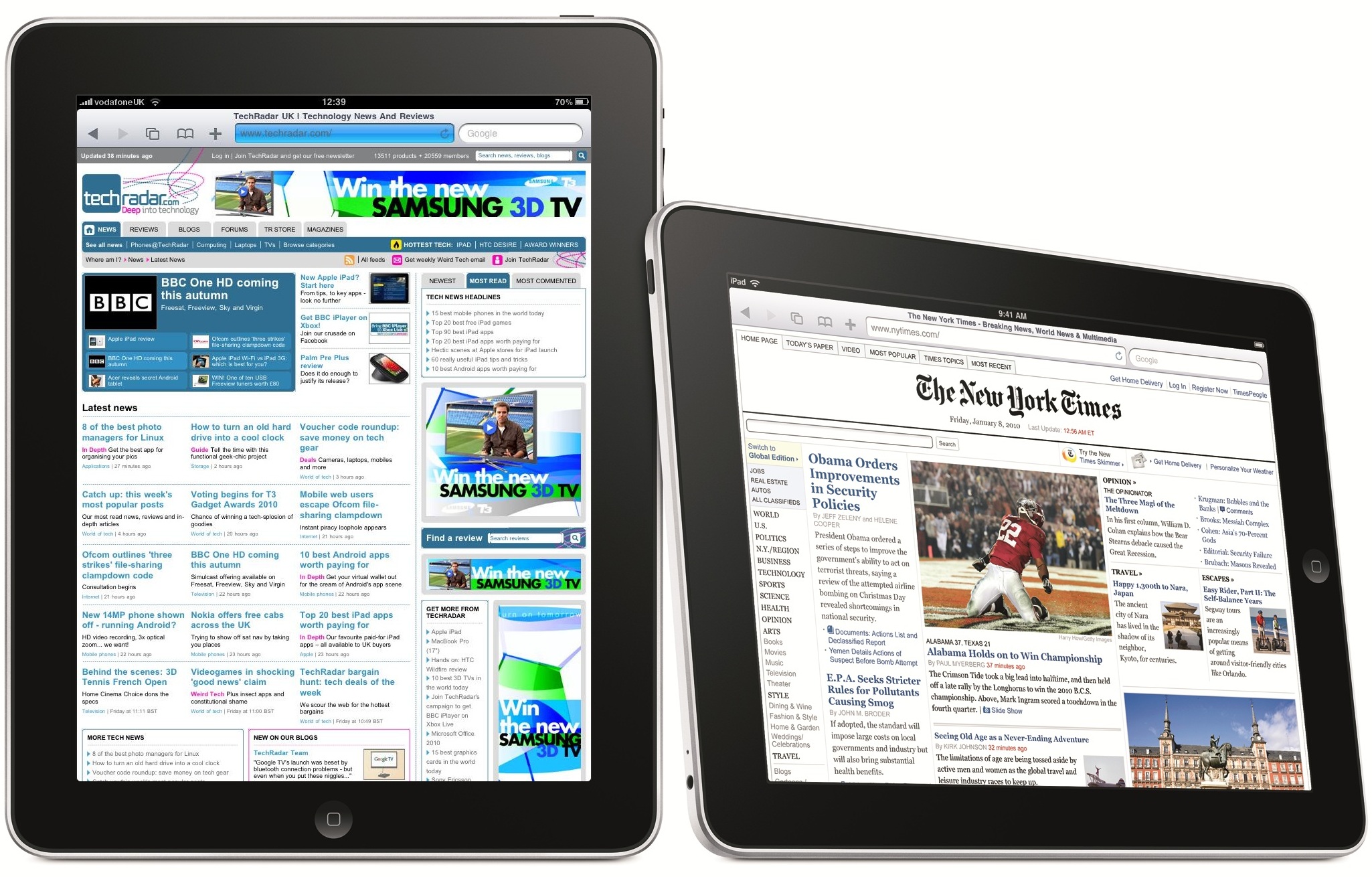Why you can trust TechRadar

With the iPad 3G carrying a not-insignificant £100 premium on top of the Wi-fi only version – before your monthly tariff charges, of course - the obvious questions then, are: does the 3G work well, and is it worth paying for?
The advantages of the iPad 3G are obvious. While the original iPad relies entirely on Wi-Fi hotspots to stay connected, the iPad 3G is a true roaming device which uses 3G phone networks to stay online whenever you've got reception.
We're testing the iPad 3G using the Vodafone UK network, but there are lots of different networks and tariffs to choose from.
The cheapest iPad 3G data plan in the UK comes from Three, with 1GB of data costing you as little as £7.50 a month, while £15 a month will net you a 10GB plan. That's a heck of a lot cheaper than some of the other networks. Vodafone, for example, is charging £25 for just 5GB.
3G data plans for the iPad are available from Three, O2, Vodafone and Orange, and you can read more about the best deals in our Best iPad data plans for UK buyers piece.
SIM card
The iPad 3G uses a new kind of SIM card called a microSIM. The chip is exactly the same as on a normal SIM card, there's just less plastic surrounding it so it's smaller. The microSIM fits into a slot on the left hand side of the chassis.
Sign up for breaking news, reviews, opinion, top tech deals, and more.
In the box you'll find a small pin tool which you can use to eject the microSIM holder, which then just slots neatly back in once you've inserted the SIM.
Network speed
It goes without saying that browsing the internet using the iPad's 3G connection is nowhere near as slick an experience as using the Wi-Fi - just as with the iPhone.

Websites take around three times as long to load, even with a full signal. This depends on the network of course, and has little to do with the iPad itself. The iPad will always try to connect to a Wi-Fi connection if one is available anyway, so you'll only use your data connection where absolutely necessary.
The App Store is one place you might want to avoid going if you're away from a wireless network. It's a slow process browsing it, and downloading and installing Apps can be a laborious experience unless your connection is bullet proof and lightning fast.

Drawbacks
While the benefits of 3G connectivity are obvious, it's not all smooth sailing for the iPad 3G. We think the price is a massive drawback – it could even be a dealbreaker, and this is why…
Remember the iPad 3G costs from £529 with that £100 premium. You've then got to pay your tariff, which could cost anywhere between £7.50 and £25 a month. And that means in your first 12 months, the iPad 3G will cost you £619 at the very least –if you want more than a 1GB plan it'll be more of course – up to £829. Whichever way you look at it, that's ludicrously expensive.
The Three MiFi is one example of a product you can pair with the Wi-Fi only iPad to negate the need to spend that extra £100 for the 3G model.

It's a dongle which offers up its 3G connection as a Wi-Fi signal to any or all of your wireless devices. As far as the iPad is concerned, it's connected to a Wi-Fi access point – except you're on the move and not tied down to that Starbucks café you had lunch in.
The MiFi is available from as little as £9.50 a month on an 18 month contract. What's more, you'll be able to use it for your phone and your laptop as well. The total comes to a minimum of £543 – still expensive in our book, but much more agreeable than the alternative – especially if you insist on a 3G connection.
Current page: Apple iPad 3G: 3G performance
Prev Page Apple iPad: Performance and interface Next Page Apple iPad 3G: Verdict
James was part of the TechRadar editorial team for eight years up until 2015 and now works in a senior position for TR's parent company Future. An experienced Content Director with a demonstrated history of working in the media production industry. Skilled in Search Engine Optimization (SEO), E-commerce Optimization, Journalism, Digital Marketing, and Social Media. James can do it all.
